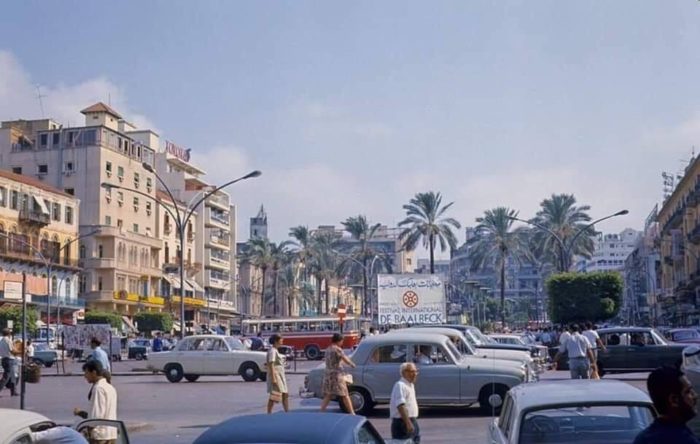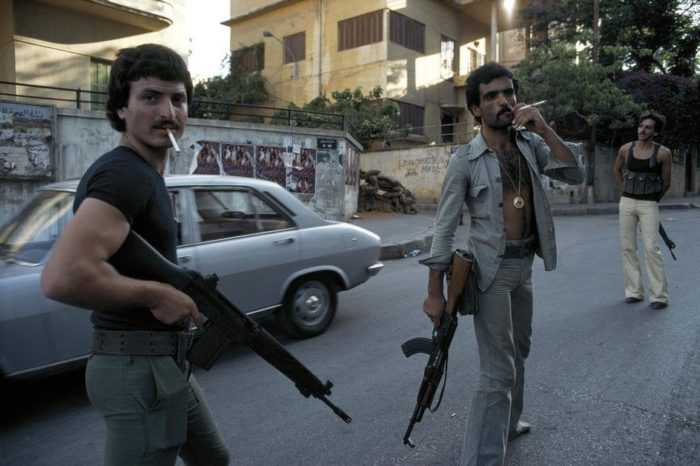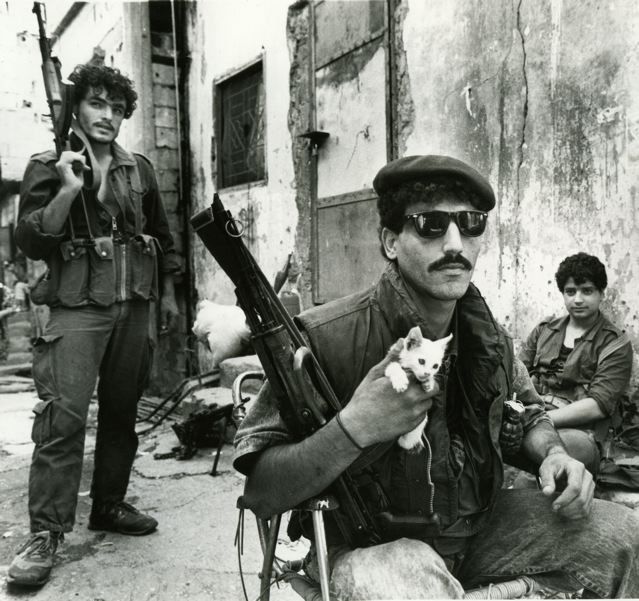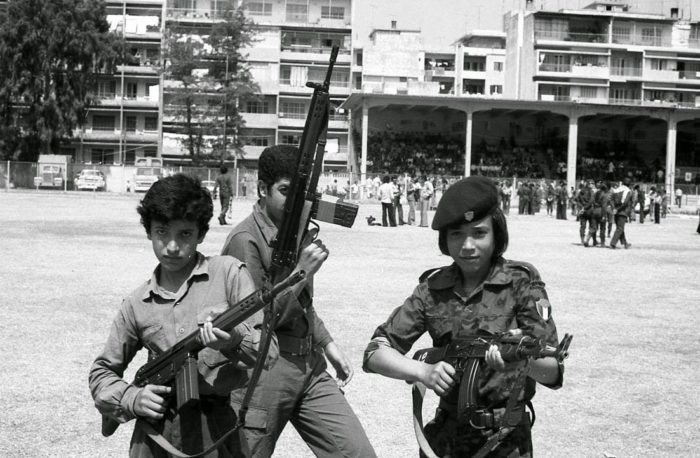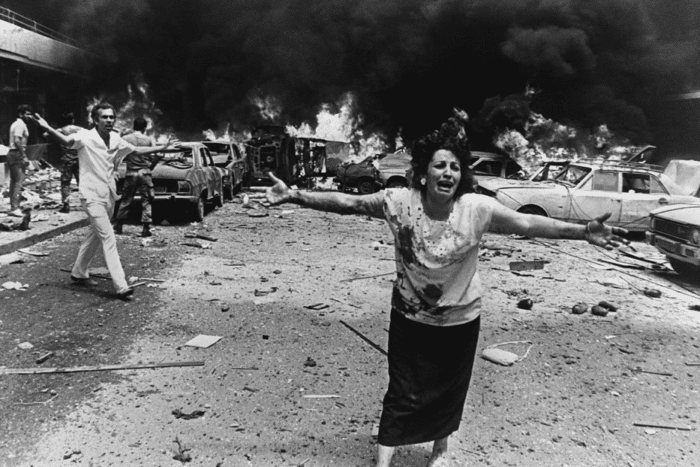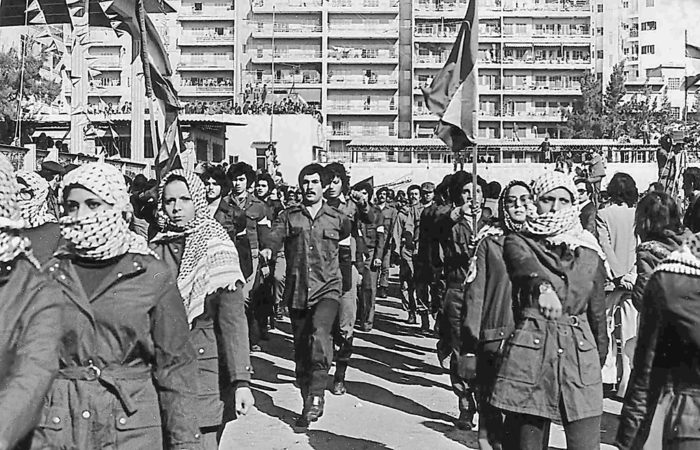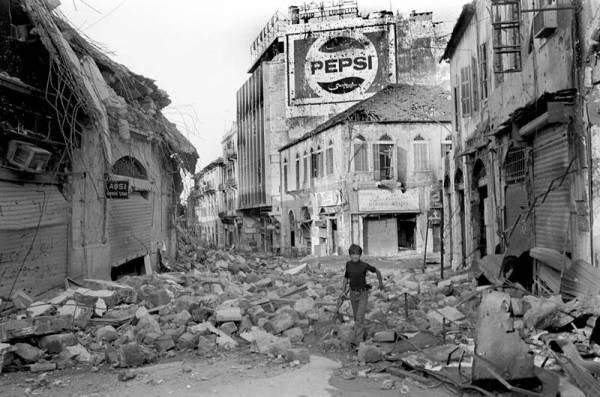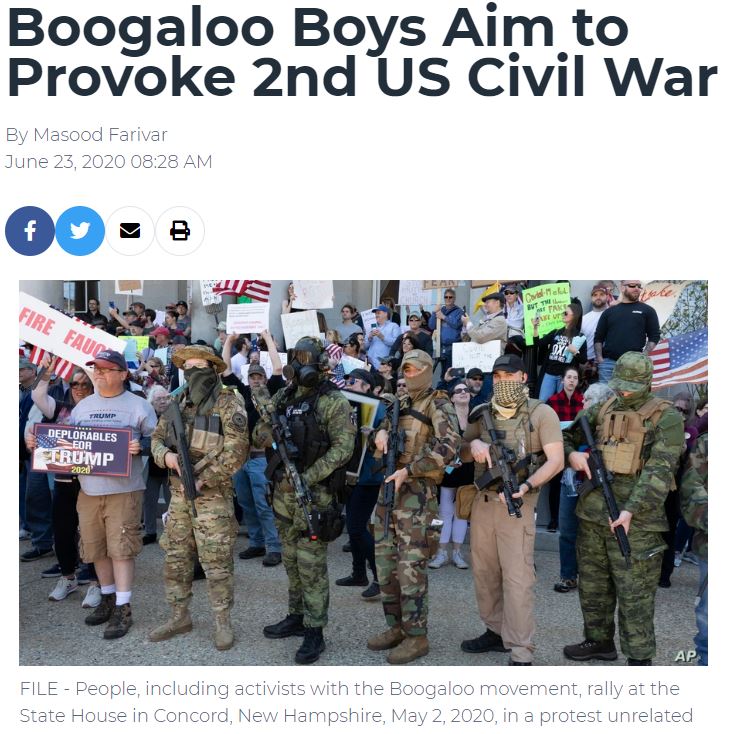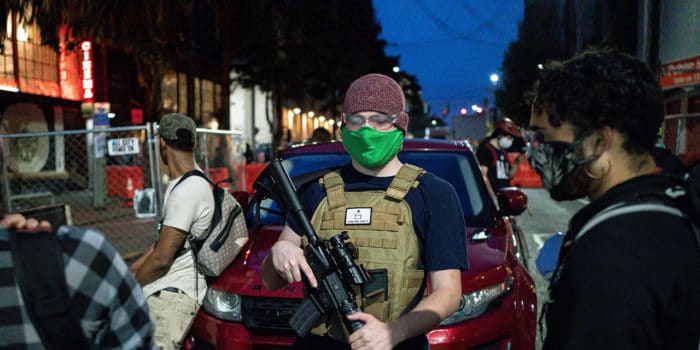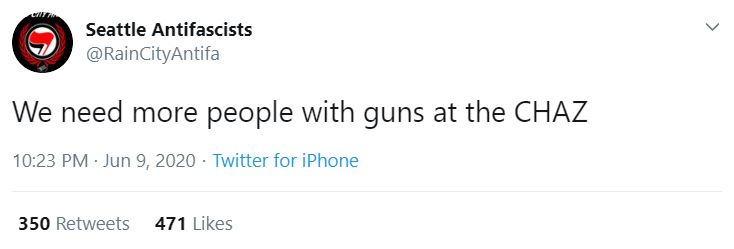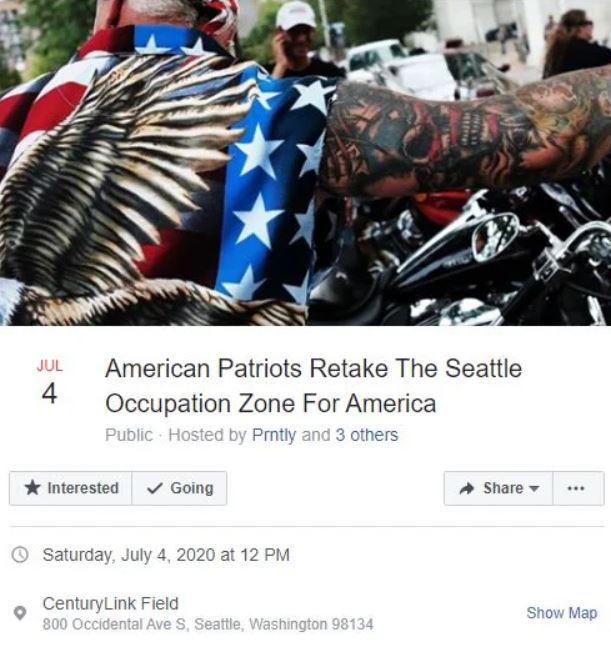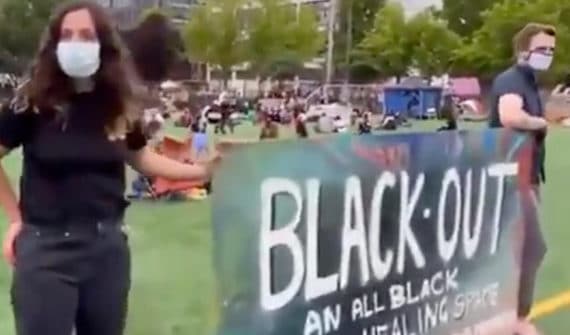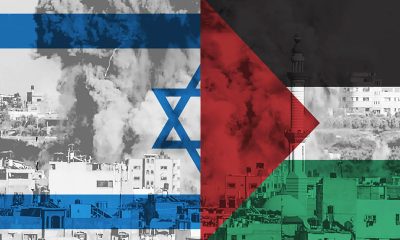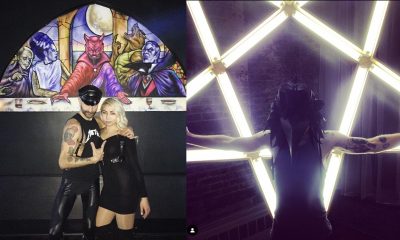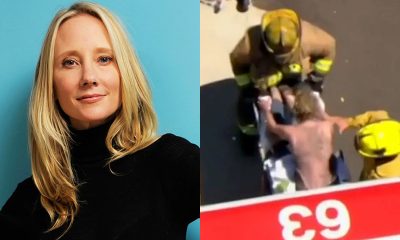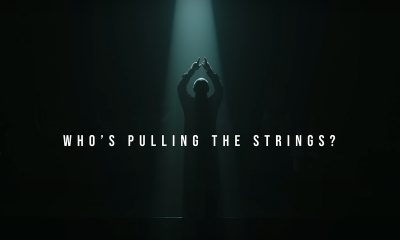Latest News
Lebanon Was Torn Apart by a Civil War and the U.S. is Going Down a Similar Path
In 1975, Lebanon descended into a violent civil war that destroyed this once vibrant and prosperous country. Here’s how the U.S. is following in its footsteps.
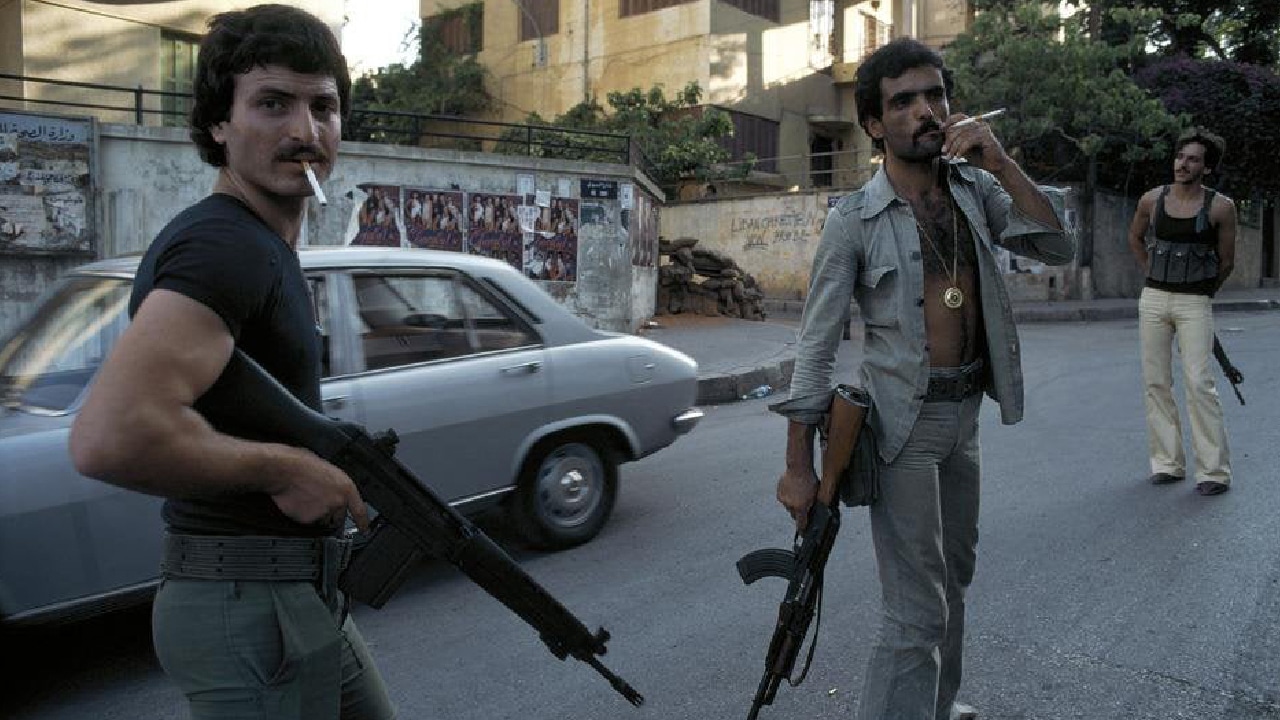
45 years ago, a horrific civil war broke out in Lebanon. My parents, like millions of other Lebanese people, fled the country, looking for a better life.
I was born and raised far away from the massacres happening in Lebanon. However, throughout my childhood, my family’s lively kitchen table discussions put me right into the struggles of the Lebanese civil war. I’ve also traveled there a few times and witnessed first hand the insanity of going about one’s day as bombs are blasting less than a mile away.
Although an entire book could be written about the complex causes that led to the Lebanese civil war, its root cause can be summed up in a single word: Division.
Indeed, fueled by outside forces, the various groups forming the Lebanese population turned against each other and became mortal enemies.
Partly due to this knowledge, I’ve been warning for years against the division agenda taking place in the United States. Sadly, in the past months, things were taken to yet another level. Apparently, I am not the only one seeing this disturbing shift.
Although mass media is downplaying or completely ignoring some of the recent developments in the U.S., there are clear signs that some actors want the country to be torn apart by hatred and division. The same exact agenda happened in the past and it led to an all-out civil war. It is time for people to wake up and truly realize what is happening.
So, here’s a (very simplified) story of how a once open and prosperous Lebanon descended into a brutal civil war. And here’s how America is dangerously following in its footsteps.
Lebanese Civil War
Due to its strong economy and cultural diversity, Lebanon used to be known as the “Paris of the East” and the “pearl of the Orient”. Modern and open to the world, Lebanon was a cultural and financial pole of its region and attracted droves of tourists and businessmen from the West. The local population was composed of several ethnic and religious groups (about half Christian and half Muslim) who lived in relative harmony. Despite their differences, people in Lebanon considered themselves, above all, Lebanese brothers and sisters.
“While at first glance, this ethnic, linguistic, religious and denominational diversity might seem to cause civil and political unrest, “for much of Lebanon’s history this multitudinous diversity of religious communities has coexisted with little conflict”.
– Lebanon, Wikipedia
However, a series of events during the 1960s and 1970s greatly soured the social climate in Lebanon. First, about 100,000 Palestinians crossed the border to Lebanon and settled in makeshift camps. This massive wave of refugees deeply destabilized this small country of about 2 million inhabitants. Furthermore, the heavy presence of the Palestinian Liberation Organization (PLO) in these camps led to frictions between Lebanese Christians and Palestinian refugees.
Outside forces saw in this climate of instability an opportunity to meddle in Lebanon’s affairs and to advance their interests inside this influential country strategically placed on the Mediterranean. Through the involvement of foreign agents, religious groups who previously coexisted peacefully radicalized their positions and began fomenting hatred against the others. As a result, Muslim groups in Lebanon sided with the Palestinians and Christians turned against the Muslims.
Soon after, militias made of civilians began popping up across the country. Under the leadership of charismatic warlords, these militias were originally created for self-dense. Inevitably, opposing militias began clashing and people got killed. Through a vicious cycle of bloody massacres and bloodier retaliations, the country spiraled into horrific, chaotic, and extremely violent civil war.
Militias took control of entire districts and controlled those who entered through checkpoints. Those who were not of the correct religion were in great danger and were often shot and killed on the spot.
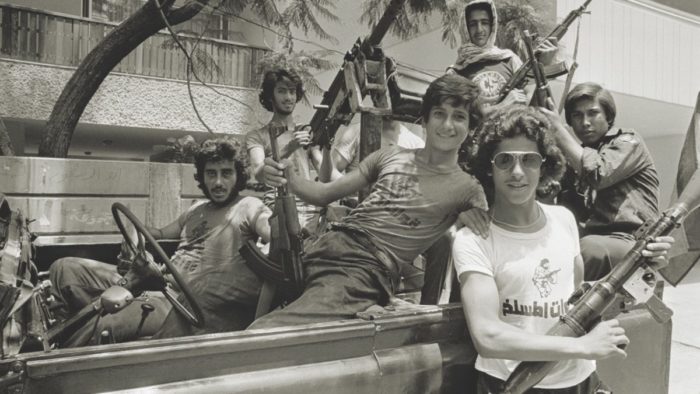
Militiamen began wearing tee shirts labeled with the name of their organization. The press adopted the same system soon after.
While these militias claimed to defend their people, they were, in the grand scheme of things, puppets controlled by foreign puppeteers.
Backed by Iran and the Soviet Union, Muslims sided with left-wing groups that sought to include Lebanon inside a wider pan-Arabic state. On the other side, right-wing nationalist Christians sought independence for the Arabic world and openness to the West. Christian militias received backing from the West – notably the United States – through Israel.
As militias gained strength and support, guerilla warfare turned the streets into warzones and neighborhoods into trenches. To make things even more explosive, Lebanon’s neighboring countries Syria and Israel got involved in the war, supporting various groups according to their own interests. Faced with this chaos, the official Lebanese army folded and split in half.
In the early stages of the war, militias functioned in a mafia-style matter and secured funding through neighborhood checkpoints and black-market business. However, as the stakes of the war grew, outside forces provided the militias with funds, training, weapons, and intel. In other words, they turned these glorified street gangs into professional armies.

Lebanese Forces (a union of various Christian militias) posing in front of a large crucifix. The army was equipped with armor, artillery, commando units, a small Navy, and a highly advanced Intelligence branch.
The civil war spanned from 1975 to 1990. It killed over 120,000 people and caused a mass exodus of Lebanese people to other countries.”The Paris of the East” was completely decimated.
Some might ask: “Who won the war?”. Nobody. Everyone lost. And, thirty years later, Lebanon remains a shell of what it once was. Yes, the country rebuilt beautifully and even regained some of its vibrant nightlife. However, the country remains highly unstable, deeply divided, profoundly corrupted, and fully subject to outside meddling. For instance, at the moment of writing these lines, the country is going through a severe banking crisis where people cannot even withdraw their own money from their bank accounts.
The profound scars that mutilated the country are healing with great difficulty. While, at first, groups in Lebanon had no real reason to hate each other, the horrific massacres perpetrated by all sides provided them with all the reasons they need. And those who controlled them knew that would happen.
The same spiral of hate and violence awaits America if it chooses to go down the same path of hate and division.
Divided We Fall
Of course, the United States and Lebanon are very different countries and we are living in very different times. However, the blueprint to destroy a country by exacerbating divisions remains the same. In fact, one can say that Lebanon underwent a crude and primitive version of what we are currently witnessing in the United States. But it is happening. And it is succeeding.
After years of intense disinformation (amplified by mass media and social media), an ever-widening gap is dividing the Left and the Right in the United States. Like in Lebanon, identity politics are being used to exacerbate these differences as racial tensions are used to advance political agendas.
During the recent BLM protests, some bizarre events occurred which appear to be custom-made to generate division.
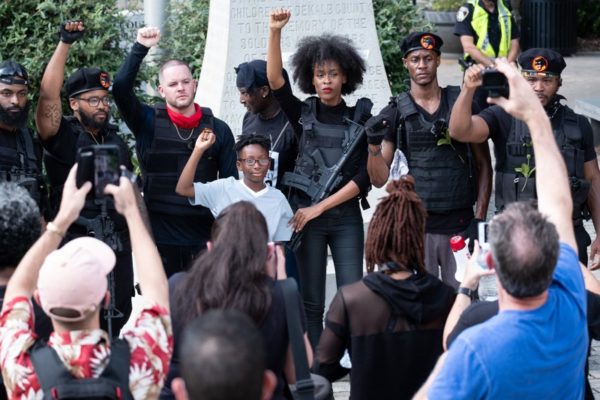
On June 3rd, heavily armed protestors claiming to be The New Black Panther Party gained lots of attention in Atlanta.
According to the SPLC, the New Black Panther Party is a “virulently racist and antisemitic organization whose leaders have encouraged violence against whites, Jews and law enforcement officers”. This group has no relation to the original Black Panthers which actually spoke against the New Black Panthers’ focus on hating others instead of loving themselves.
Knowing these facts, there was something off about these protestors. First, one of them was white. Second, they did not wear the official logo of the New Black Panther Party. Third, everybody looked suspiciously like actors and models.
That’s because they were … actors and models.
Hashim Nzinga, the current leader of the New Black Panther Party stated on his Facebook page that this group was likely an “FBI front”. He also added that they would never allow a white person within their ranks.
Despite the (barely mediatized) confession from these actors, the media circus reached its goal: To fuel division and the polarization of positions. These kinds of stunts are custom-made to fuel the radicalization of the other extreme. One commentator observed:
“The BLM (more likely some white leftist handlers) are using actors to pose as Black Panthers to help market the trend of arming one ethnogroup in a polarized multiracial society.”
On the other side, right-wing nationalist militias have been gaining steam and momentum in the past months. Fueled by COVID lockdowns and civil unrest, they’ve found a reason to exist and to garner support.
Not unlike in the early stages of the Lebanese civil war, various armed groups are appearing in the public space. While most of them are currently poorly organized and barely funded, they are ripe for the picking by forces who wish to meddle in the affairs of the United States.
There are also other worrying similarities between Lebanon and the United States.
Autonomous Zones
A few paragraphs ago, I explained how neighborhoods in Lebanon were controlled by armed militias who controlled those who entered. This is the entrance of the CHAZ “cop-free” zone in Seattle.
While CHAZ is described as an idyllic place of peaceful protest, it is actually a strategy to bait America into radicalization and, if possible, an escalation of violence.
CHAZ was also the site of various absurdities, all revolving around the theme of dividing the United States.
Seattle police recently reported that two shootings took place inside the CHAZ, one of which resulted in the killing of a 19-year-old man. There was also a rape, assaults, burglary, arson, and property destruction. In most cases, police attempting to help the victims were met with violent protestors. For those reasons (and many more), the city of Seattle recently announcement the dismantlement of the CHAZ “in the near future”. However, a precedent has been set, the radicalization took another step and there are already attempts at creating other “autonomous zones”.
In Conclusion
The parallels between Lebanon’s descent into a civil war and the current situation in the United States are difficult to ignore. For years, I’ve been warning readers against the potentially devastating consequences of hatred and division within a country. That is because history has already shown us where this could lead.
Irreconcilable division is one of the worst things that can happen to a country. Instead of simply enjoying life, people become obsessed with the difference of others. Once this hatred is established, a single event (whether it is artificially manufactured or not) can quickly spark a cycle of violence and retaliation. Division also makes a country vulnerable to entities seeking to advance their interests through the funding of radical groups.
In short, this article is a warning from someone who might have a different perspective on things than most Americans. Foreign and local agents are currently attempting to bait Americans into radicalizing their views and hating their fellow Americans. This happened in the past and it led to a civil war.
Although America remains relatively far from actual war, it is grand time for its citizens to recognize the incremental steps leading towards it. In these treacherous times, people need to be wary of those who claim to help them through the promotion of hatred and violence. Those who control these groups do not care about you or your country. Quite to the contrary, they want to weaken it, destroy its freedom-loving spirits, and integrate it into a dystopian world order.
P.S. The economic crisis caused by COVID-19 has caused a massive drop in advertising revenues, making it difficult for independent websites such as The Vigilant Citizen to remain afloat. If you appreciated this article, please consider showing your support through a small monthly donation on Patreon. If you prefer, you can also make a one-time donation here. Your support will help this site navigate these difficult times as it continues to provide vital information and analysis on a regular basis. Thank you!
- Hmm 🤔
- Donald Trump attends WEF conference in Davos (January 2020)
- 100% Proof Our Government is Hiding Nephilim Bodies & Are Trying to Bring Back Nimrod/Gilgamesh. Could Nimrod be the Beast of Revelation 17:8-11?
- Tesla's Elon Musk: We're 'Summoning the Demon' with Artificial Intelligence
- Lindsay Mills : Are you aware of occult symbolism in Her pictures..?!?
- LA Fire Attack Map is identical to the LA Smart City Rail Map
- Birds of a feather flock together …
Get an e-mail notification as soon as a new article is published on The Vigilant Citizen.
-

 Movies and TV2 months ago
Movies and TV2 months agoAdrenochrome and Ritual Humiliation: The True Meaning of the Movie “The Substance”
-

 Pics of the Month3 months ago
Pics of the Month3 months agoSymbolic Pics of the Month 10/24
-

 Latest News2 months ago
Latest News2 months agoKamala’s Campaign Was Objectively the Worst in Recent History
-
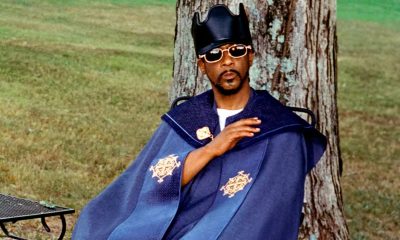
 Pics of the Month2 months ago
Pics of the Month2 months agoSymbolic Pics of the Month 12/24
-

 Latest News2 months ago
Latest News2 months agoWas the Jake Paul vs Mike Tyson Fight a Humiliation Ritual?
-

 Latest News3 months ago
Latest News3 months agoAn “Urban Opera” in Toulouse Using Massive Machines is Denounced as a Satanic Ritual
-

 Movies and TV1 month ago
Movies and TV1 month agoThe Hidden Meaning of “Smile 2”: It’s About Monarch Mind Control
-

 Latest News1 month ago
Latest News1 month agoIt Was Bound to Happen: Jay-Z Accused of Abusing a 13-Year-Old Girl

